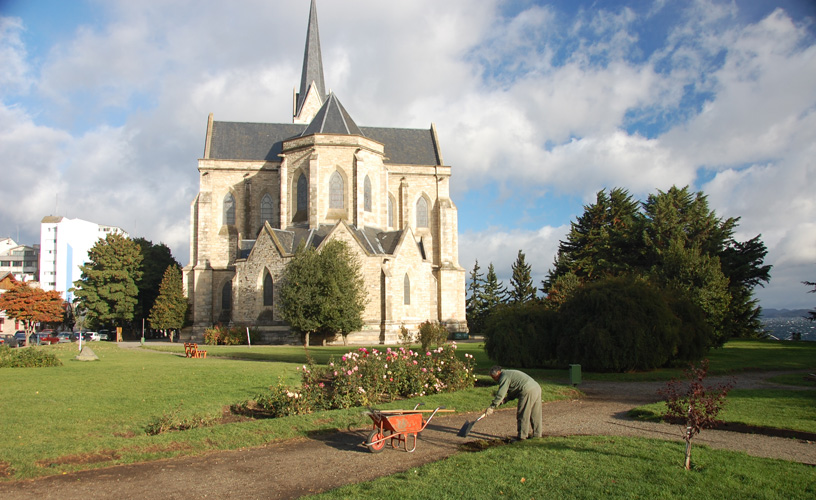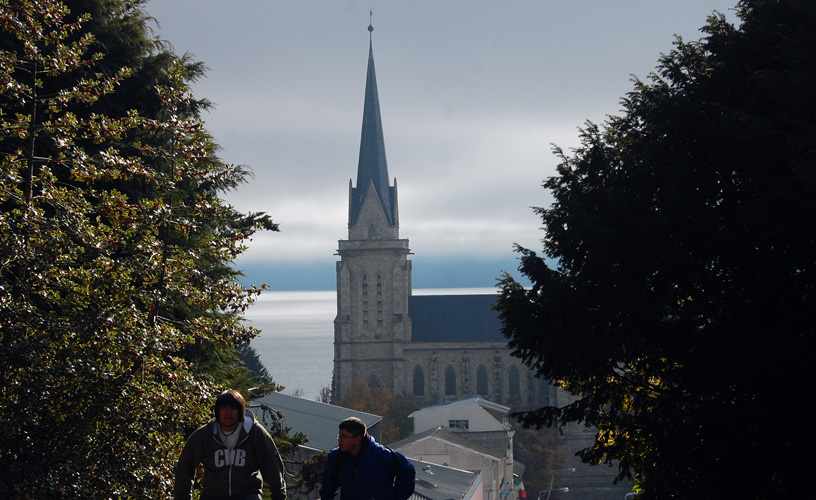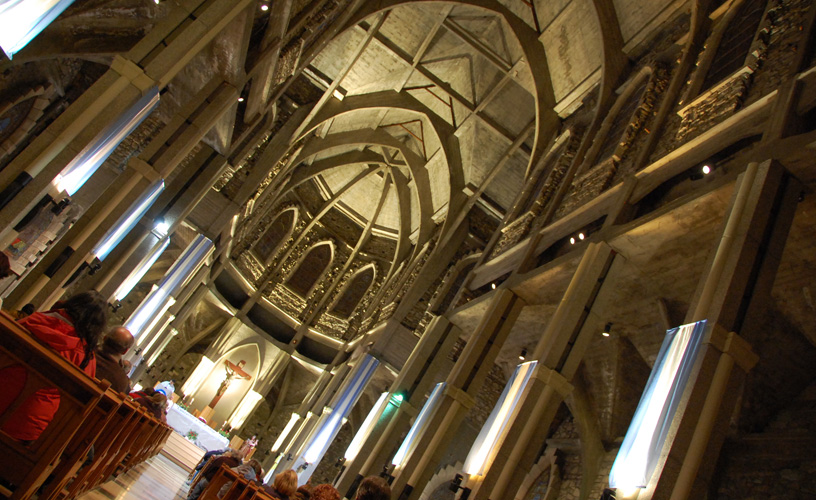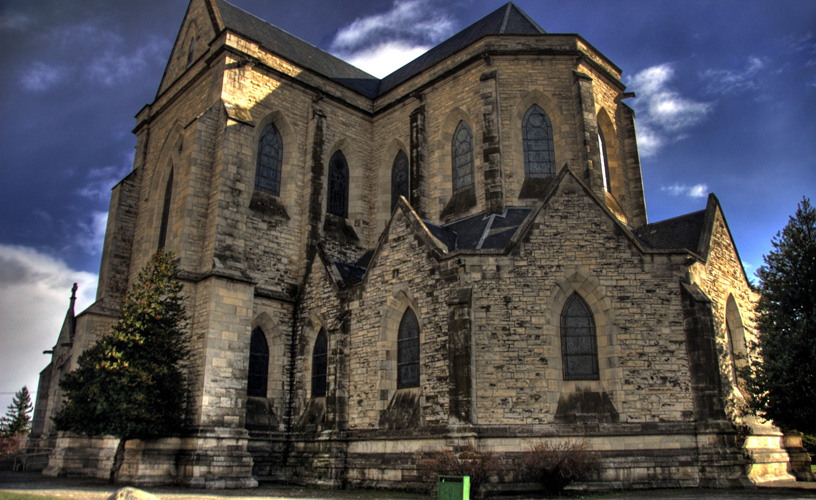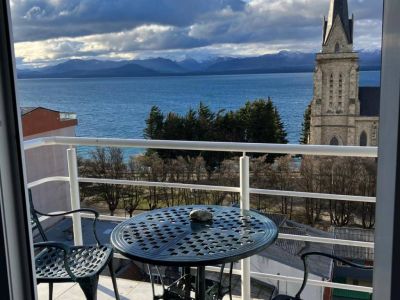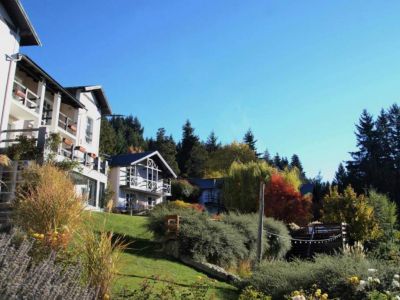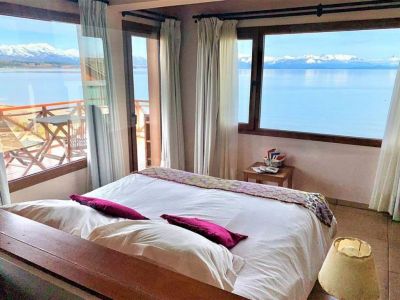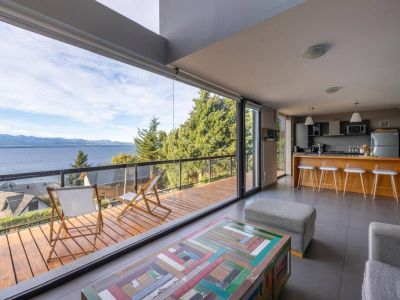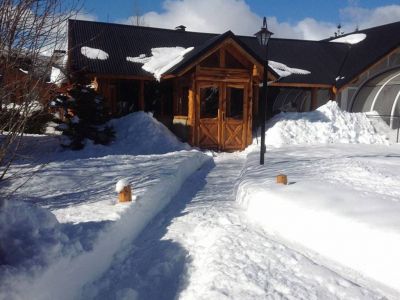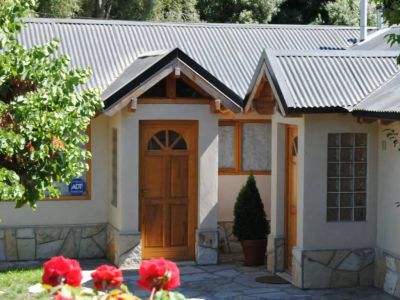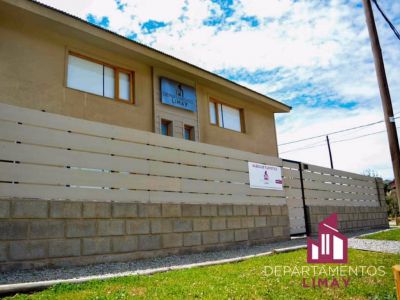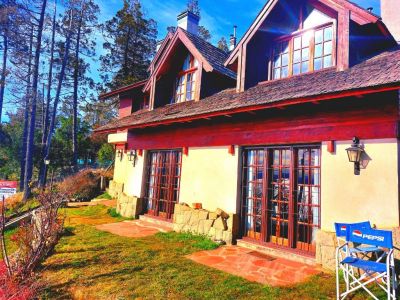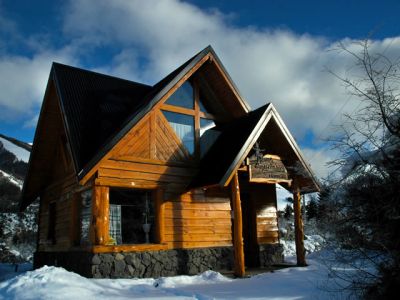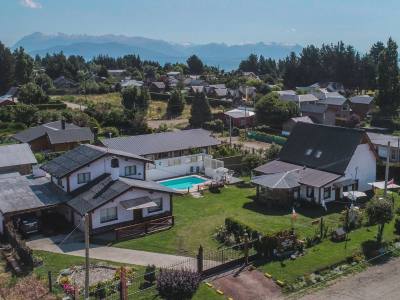We discovered Bariloche’s church cathedral as soon as we reached the city. Close to the shore of Lake Nahuel Huapi and surrounded by a line of tall pine-trees, it does not go unnoticed. This house of prayer features a Neo-gothic style with simple lines, very high walls and a dome crowned with a significant crucifix and a globe. Inside, its classical construction in the shape of a Latin cross combines perfectly with the simplicity outside. Upon entering the building past its thick wooden gates, we stopped at the hall to appreciate two important figures. One of them was made of stone and it represented the image of Our Lady of the Nahuel Huapi holding Child Jesus in her arms and resting her right hand on the shoulder of a native child. The second one was carved in wood and it featured Ceferino Namuncurá wearing his classic poncho pampa. Both of them are enough evidence of the missionary message of the Church.
Impressive Cathedral in Bariloche
We were surprised to learn that the cathedral was put under the protection of Our Lady of the Nahuel Huapi by Monsignor Essandi and that such image had accompanied the ancient mission founded by Father Mascardi during the seventeenth century.
We reached the central nave almost in silence, as if accompanying that very high and simple resonance box. It was held by large columns and the walls were made of local stone. At the altar, a large crucified Jesus Christ prevailed.
The colorful Byzantine stained glasses occupied a predominant position in the last stage of the construction of the cathedral. The image of the Patron Saint stood completely transparent in the altar in front. What is particular about these stained glass figures is that they offered a tribute to their own artisans. The faces of the missionaries Mascardi and Melanesio and of all those who gave their life to the Church, namely builders Alejandro Bustillo and Miguel Angel Césari, were assigned to Biblical characters (Saint Raphael Archangel, Saint Michael Archangel, etc).
Mónica Pons
Eduardo Epifanio
Our Lady of the Nahuel Huapí
Almirante O’Connor Ave. and Beschtedt St.
